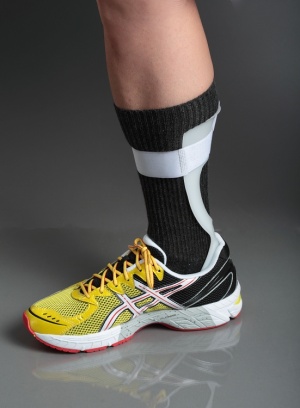Foot drop
Original Editor - Your name will be added here if you created the original content for this page.
Lead Editors
Clinically Relevant Anatomy[edit | edit source]
add text here relating to clinically relevant anatomy of the condition
Mechanism of Injury / Pathological Process[edit | edit source]
add text here relating to the mechanism of injury and/or pathology of the condition
Clinical Presentation[edit | edit source]
add text here relating to the clinical presentation of the condition
Diagnostic Procedures[edit | edit source]
add text here relating to diagnostic tests for the condition
Outcome Measures[edit | edit source]
add links to outcome measures here (see Outcome Measures Database)
Management / Interventions[edit | edit source]
Following palsy of the common peroneal nerve the main residual symptom can be foot drop due to the disruption to L4/5 muscle groups which perform dorsiflexion.
This has been shown to resolve in two thirds of patients by one year post injury. [1]
There are methods to improve the foot drop such as: use of splinting in a solid ankle-foot orthoses or foot-up splint. These work to increase the amount of dorsiflexion the foot is held in during gait and can prevent falls as the toes do not get caught on the floor.
Ankle-Foot orthoses used for foot drop
Graded exercises to encourage active dorsiflexion has been shown to prevent atrophy and speed up recovery but more research is needed.[1]
Electro-stimulation of the effected muscle groups has also been shown to improve recovery times.[1]
In extreme cases tibialis posterior can be transposed to regain active dorsiflexion through surgery.[2]
Differential Diagnosis[edit | edit source]
add text here relating to the differential diagnosis of this condition
Resources[edit | edit source]
add appropriate resources here
References[edit | edit source]
- ↑ 1.0 1.1 1.2 Park JH, Restrepo C, Norton R, Mandel S, Sharkey PF, Parvizi J. Common peroneal nerve palsy following total knee arthroplasty: prognostic factors and course of recovery. The Journal of arthroplasty. 2013 Oct 1;28(9):1538-42
- ↑ Baima J, Krivickas L. Evaluation and treatment of peroneal neuropathy. Current reviews in musculoskeletal medicine. 2008 Jun 1;1(2):147-53.







